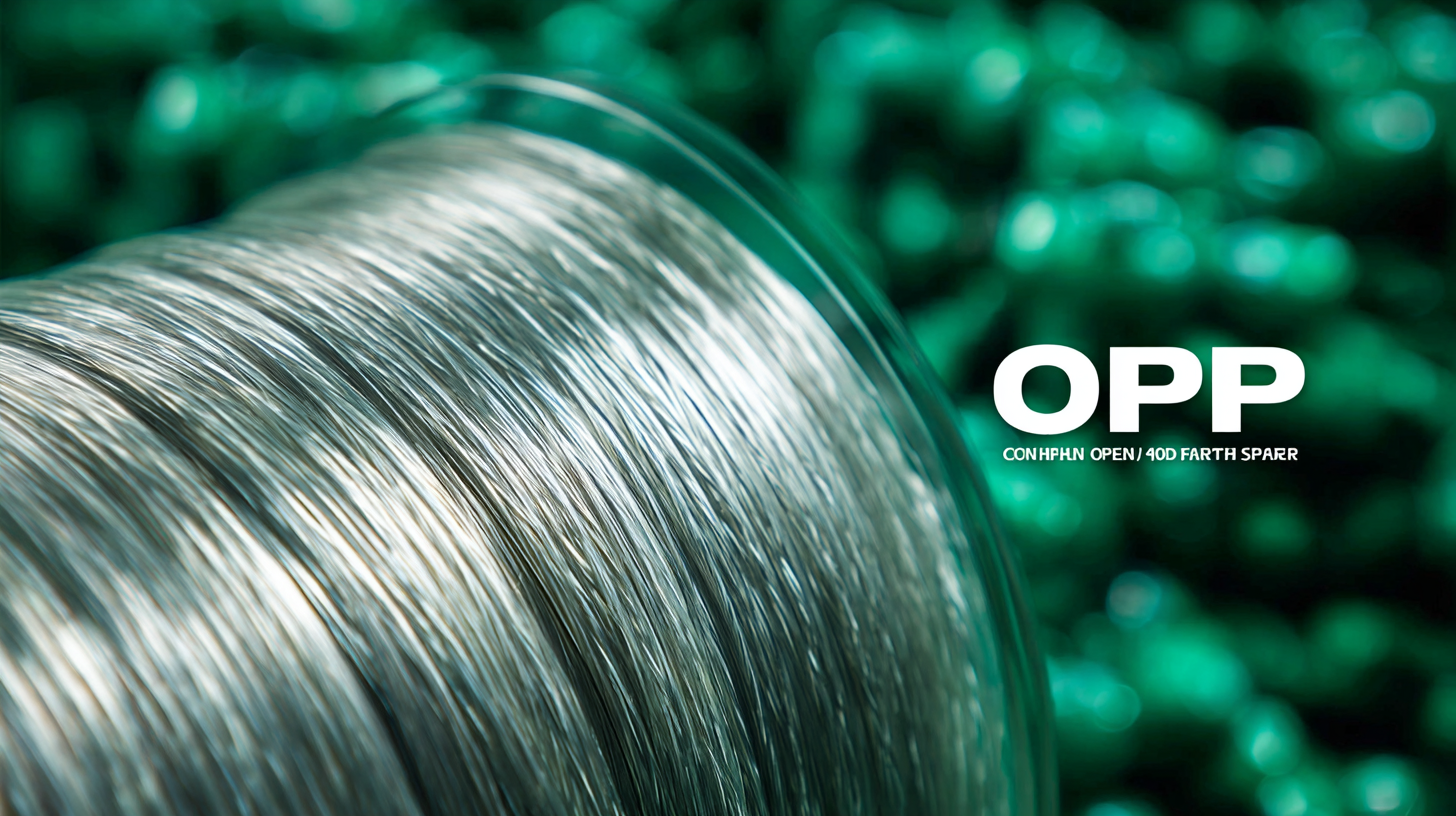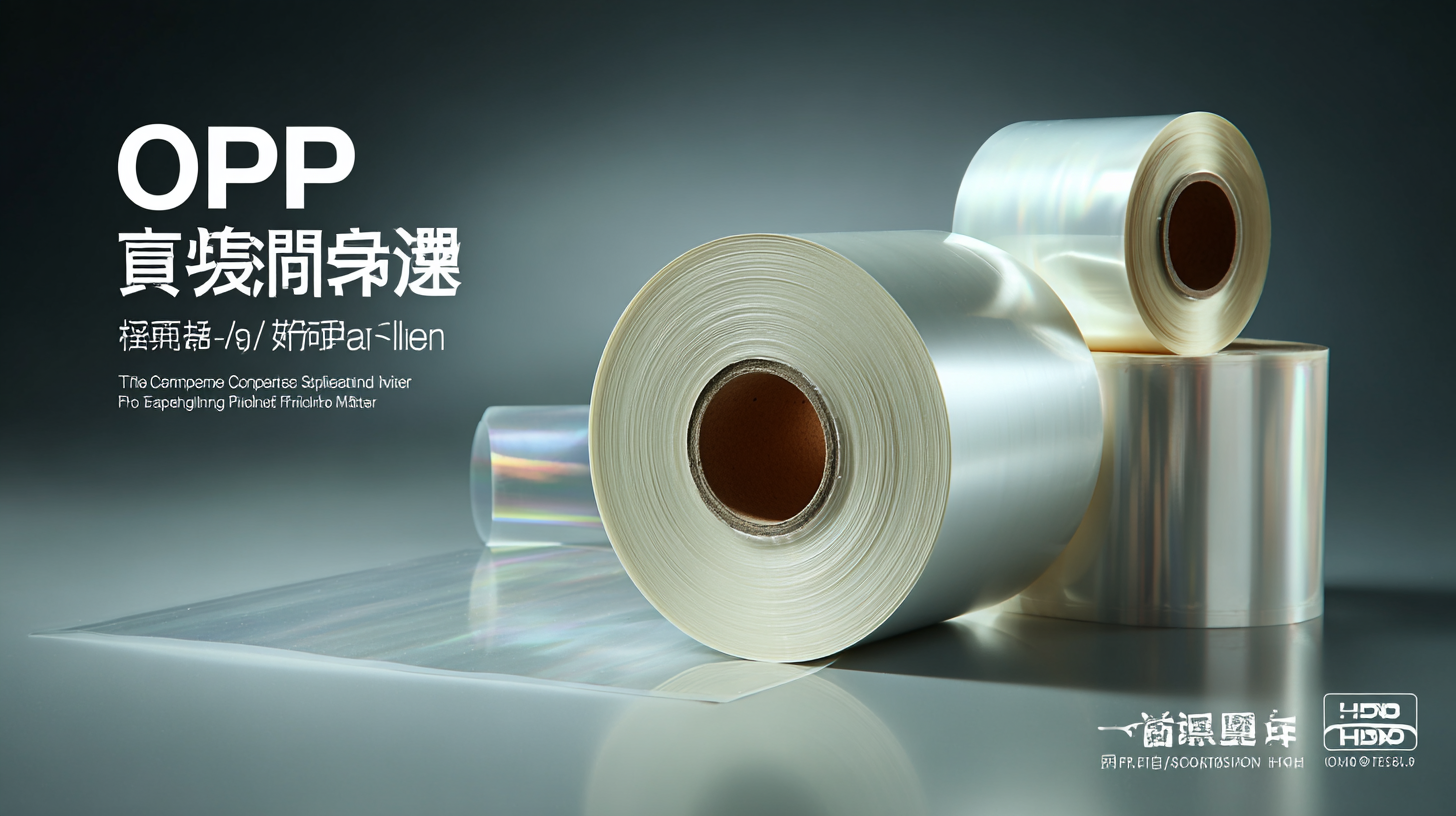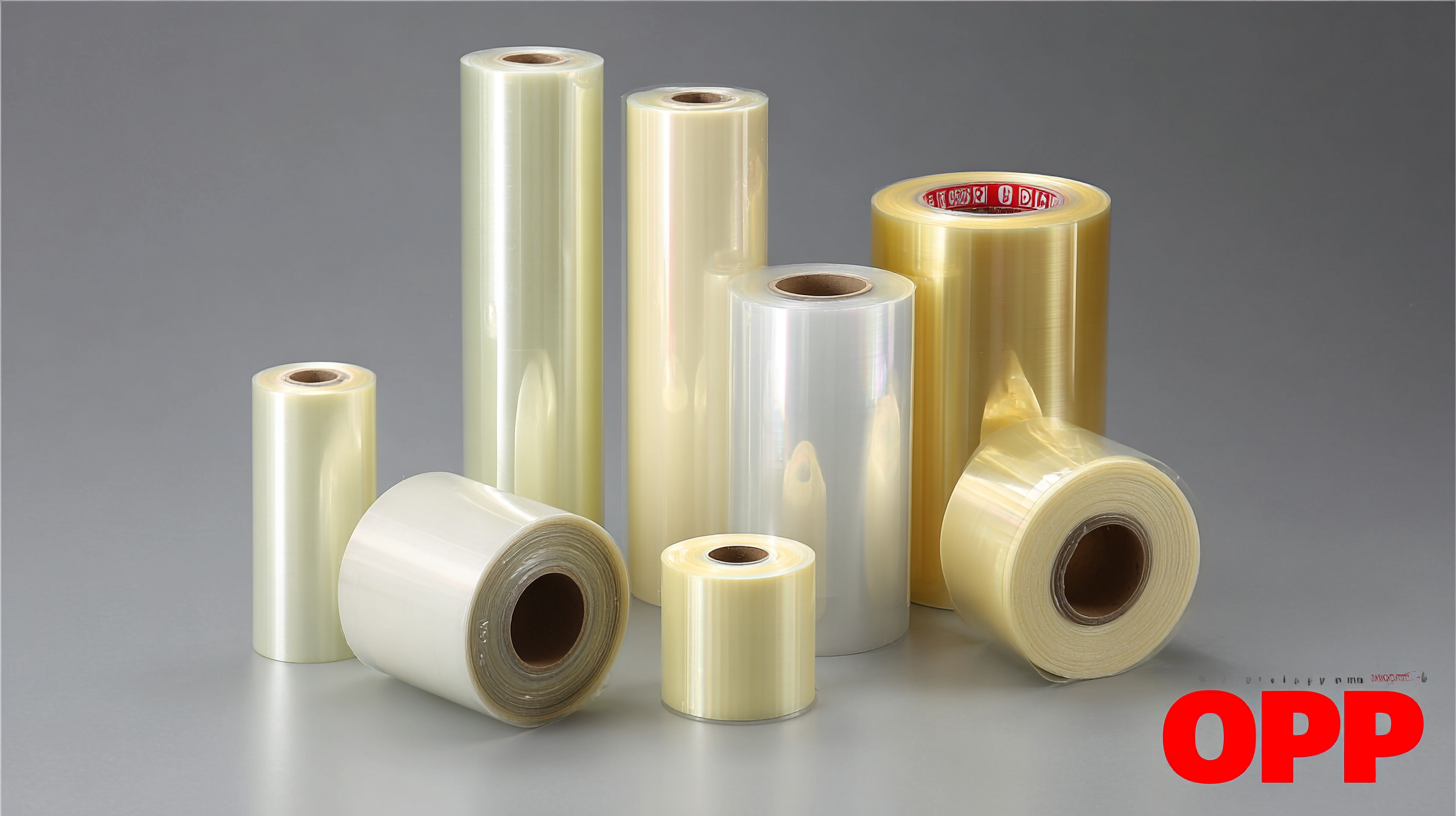
The Comprehensive Handbook to OPP Single Layer Heat Sealing Film Mastery
In the realm of packaging solutions, the OPP Single Layer Heat Sealing Film has emerged as a pivotal component for businesses aiming to enhance their product presentation and preservation. This comprehensive handbook delves into the intricate technical specifications of this innovative film, shedding light on its remarkable properties that make it an industry favorite. From its superior barrier qualities to its remarkable heat sealing capabilities, each feature is meticulously examined, accompanied by crucial numerical data to support its performance metrics. Furthermore, we will explore the top types of OPP Single Layer Heat Sealing Films available in the market today, offering insights that can empower manufacturers and suppliers alike to make informed decisions. Whether you are new to the world of packaging or seeking to refine your existing knowledge, this guide aims to equip you with mastery over OPP Single Layer Heat Sealing Film, paving the way for excellence in your packaging endeavors.

Understanding OPP Single Layer Heat Sealing Film: Key Characteristics and Benefits
OPP (Oriented Polypropylene) single layer heat sealing film is a versatile material widely used in packaging applications due to its unique properties. One of its key characteristics is its excellent clarity, providing a visually appealing presentation for products. According to a recent industry report by Grand View Research, the global demand for polypropylene films is expected to grow at a CAGR of 4.5% from 2021 to 2028, driven by the increasing demand in the food and beverage packaging sector.
The benefits of OPP single layer heat sealing film are numerous. Not only does it offer strong sealing performance, but it also provides a good barrier against moisture and oxygen, ensuring product integrity and extending shelf life. Moreover, its lightweight nature contributes to reducing overall shipping costs, an essential factor mentioned in a report by Market Research Future that notes lower logistics expenses can effectively enhance profit margins for producers.
**Tips**: When selecting OPP film for your packaging needs, consider the thickness and seal strength based on your product requirements. Testing the sealing temperature can also enhance your packaging efficiency. Additionally, keeping the film in optimal storage conditions—away from direct sunlight and moisture—will preserve its quality, ensuring it performs well during production.
Industry Standards for OPP Films: Compliance and Certification Requirements
When it comes to OPP (oriented polypropylene) films, compliance with industry standards is crucial for ensuring product quality and safety. The certification requirements set forth by organizations such as the Association of Plastic Recyclers (APR) play a significant role in maintaining these standards. For manufacturers and suppliers of OPP single layer heat sealing films, understanding these compliance requirements is not just a matter of regulatory obligation; it is a cornerstone of building trust with customers who prioritize sustainability and environmental impacts.
As the film capacitors market grows, projected to reach a valuation of USD 3,180 million by 2025 with a steady growth rate of 2.6%, the relevance of adhering to industry standards in OPP films cannot be overstated. With an increasing demand for high-quality materials in various applications, adhering to certifications helps manufacturers stand out in a competitive landscape. Compliance ensures that OPP films meet specific performance criteria, thereby supporting innovation while reducing waste through effective recycling processes.
Emphasis on certification can help companies not only enhance their credibility but also align their products with global sustainability efforts, painting a clear path toward responsible production practices in the plastic industry.
Technical Guide to the Heat Sealing Process: Parameters and Best Practices
Understanding the intricacies of the heat sealing process is crucial for maximizing the efficiency of OPP single layer heat sealing films. According to a report by Grand View Research, the global market for flexible packaging, which heavily relies on effective heat sealing techniques, is projected to reach USD 300 billion by 2025. This growth underscores the importance of mastering sealing parameters to ensure optimal adhesion and package integrity.
Key parameters in the heat sealing process include temperature, pressure, and dwell time. Each of these factors plays a vital role in determining the sealing quality. For instance, a study published in the Journal of Packaging Technology and Research indicates that temperatures exceeding 180°C can significantly enhance seal strength, provided that the sealing time is adequately adjusted to prevent material degradation. Best practices also recommend conducting thorough seal tests to identify the ideal combination of parameters specific to the film and application used, thus enabling manufacturers to reduce waste and enhance production efficiency in a highly competitive market.

Evaluating Performance: Testing Methods for OPP Film Adhesion and Durability
When dealing with OPP single layer heat sealing films, evaluating performance is crucial to ensure optimal adhesion and durability. Testing methods play a vital role in assessing these properties, providing insights into the film’s reliability in various applications.
Common tests include peel adhesion tests, where the force required to separate the film from a substrate is measured. This method helps identify how well the film can bond under tension, which is essential for packaging applications that face stress during transit.
Another important testing method is the shear adhesion test, which evaluates the film's performance against sliding forces. By applying controlled pressure and measuring the time it takes for the film to slip from the bond, manufacturers can determine its durability under real-world conditions. Environmental factors, such as temperature and humidity, are also examined to simulate various storage and usage scenarios.
This comprehensive approach to testing ensures that OPP single layer heat sealing films meet the necessary standards for performance and can sustain their integrity throughout their lifecycle.
Market Trends and Future Prospects for OPP Single Layer Heat Sealing Film Applications
As the demand for flexible food packaging continues to rise, understanding the nuances of OPP (Oriented Polypropylene) single layer heat sealing film is essential for ensuring seal integrity. The review on factors affecting seal integrity highlights critical elements such as seal temperature, pressure, and dwell time, which greatly influence the performance of heat-sealed packages. For instance, a study has shown that deviations in temperature can lead to compromised seals, jeopardizing food safety and shelf life. With a projected market growth of over 5% annually for flexible packaging, manufacturers must prioritize these sealing techniques to meet rising consumer expectations.

Recent industry reports project that OPP films will dominate the flexible packaging sector, accounting for approximately 30% of the market share by 2025. This growth is driven by the increasing demand for sustainable packaging solutions that allow easy recycling while maintaining product freshness. The evolution of OPP single layer films has led to innovations in barrier properties and sealability, enabling better preservation of food products. As manufacturers adapt to these market trends, ongoing research and advancements in seal technology will be paramount in optimizing packaging performance and enhancing consumer satisfaction.
